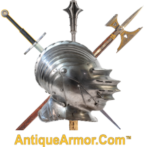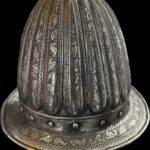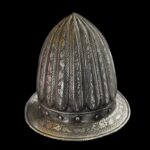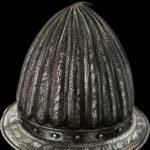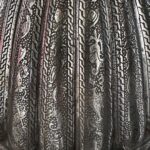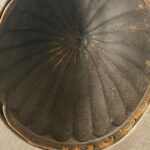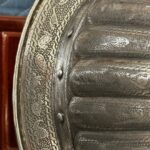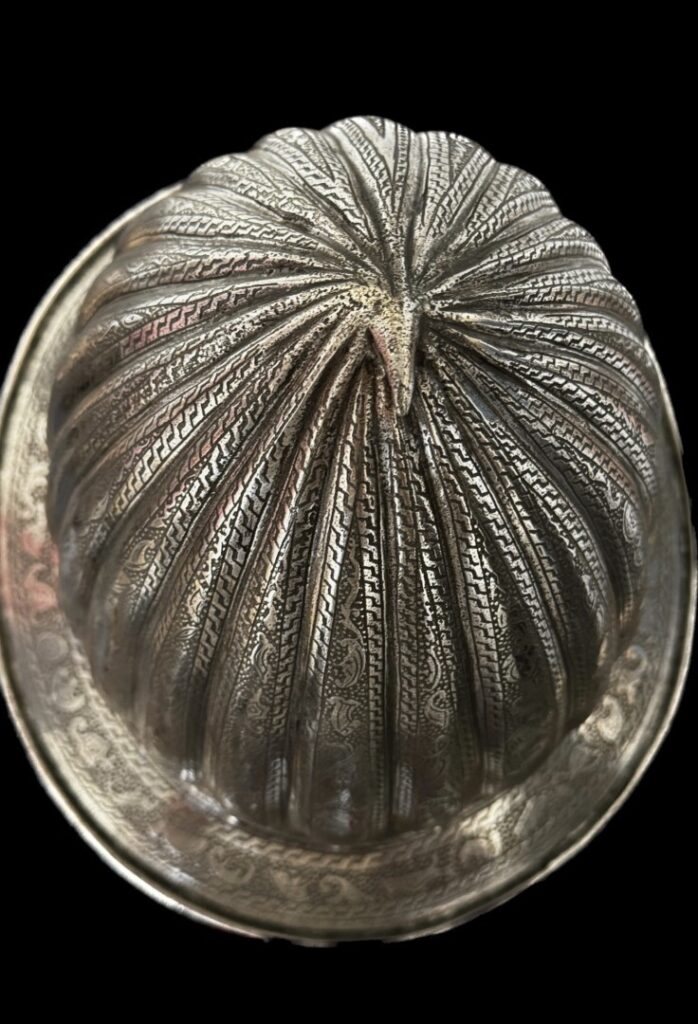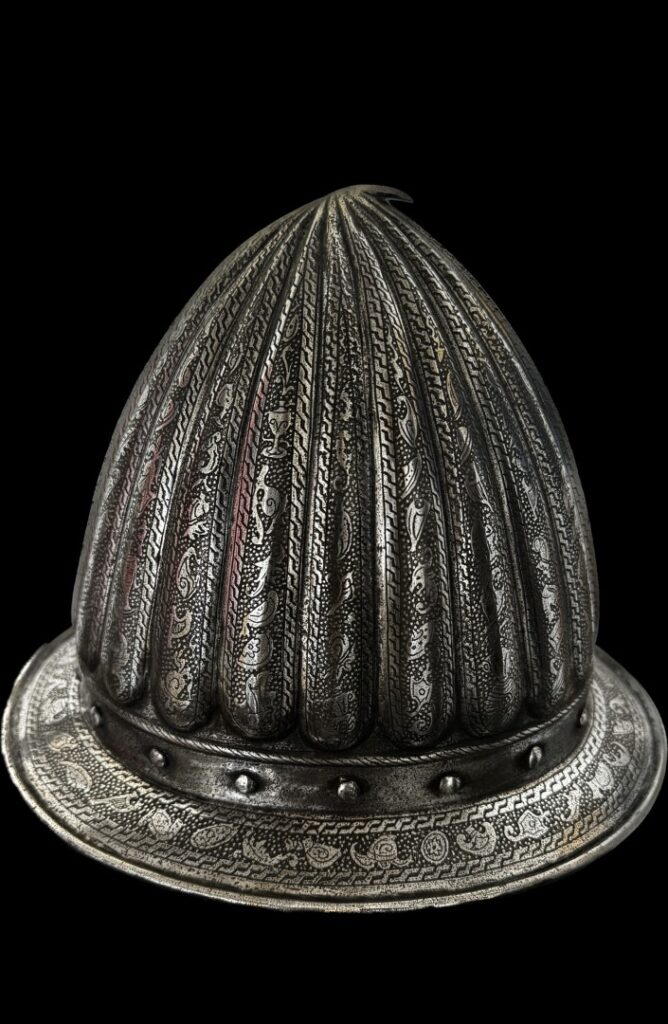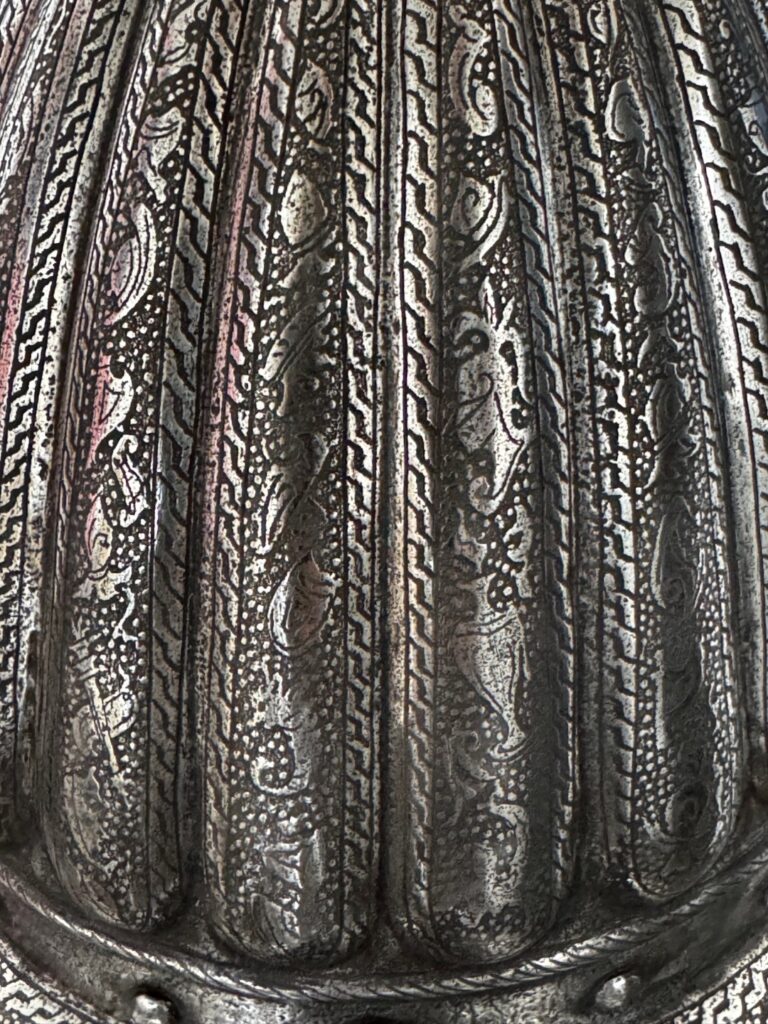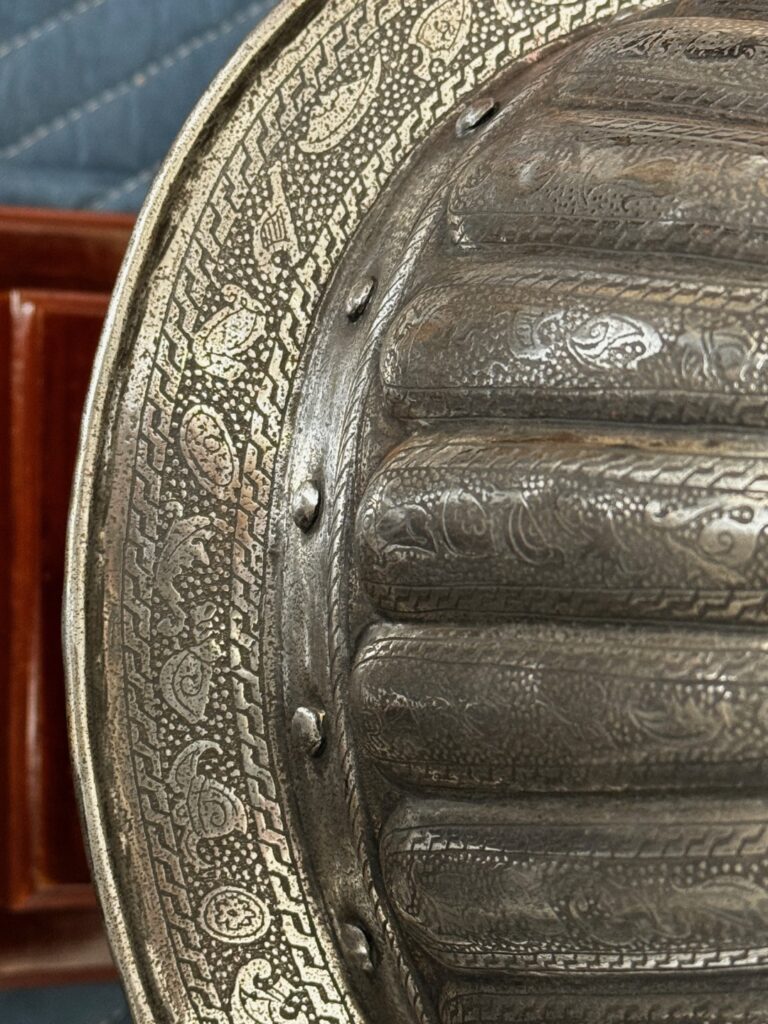1695) MASTERFULLY ETCHED AND EMBOSSED SPANISH MORION HELMET CIRCA 1590 MINT MUSEUM CONDITION:
Introduction: The morion (both variants) was used widely during the Reconquista by Spain in the Iberian Peninsula during the fight for control of the territory from the Moors (Nazarids). The military tactics of the Spanish were lighter and faster, and the morion served this purpose well. When the cabacete became popular throughout Western Europe (not just Iberia, Burgandy, it was incorrectly attributed to the Moors and named “Spanish morion” by the English.
Discussion: The name Spanish Morion is English. In French, it’s called a Cabasset. Regardless of what you call it, it is a variant of the Spanish morion, which was popular in the late 16th and early 17th centuries. Most collectors refer to it as a cabasset, which, in my opinion, is a better term. The term cabasset comes from the Spanish word cabesa, which means head ‚”The Spanish morion almost certainly developed in Italy but spread throughout Europe. During the 17th-century English Civil War, armies wore the Spanish morion; some came with settlers to the New World. The Spanish morion‚ name is attributed to the fact that it was highly used by the Spanish. However, it was made primarily in Italy and Germany (see page 189 in my book), then imported to Spain. Morions and Spanish morions were used in conjunction with a shield. The shield would be held in the left arm with the aid of an “enarmes” (see pages 403-C, 413-#20 and #21 in my book) and a shoulder strap (2) called a “guige” (see pages 402, 403-D and 405-F in my book). The guige was attached to the shield and would hang over the neck/shoulder to alleviate the shield’s weight. Imagine spending 8 to 10 hours a day lugging a shield without the aid of a guige. At the moment of conflict, the man-at-arms would raise his shield to eye level thanks to the enarmes. While his shield would protect his face, the Spanish morion/cabasset would protect the man-at-arms’s head.
Description: Constructed with an almond-shaped skull that tapers to a small stalk at the top. Made of one piece of metal. Deeply etched decoration. Border decorations with embossed bands and cartouches showing classical warriors separated by vertical bands and filled with trophies of armor and celestial masks. The lower edge is shaped into a narrow brim. Rivets for brim lining. Decorative rosette washers and rivets for the lining. A flat etched brim. The slight apple stalk is strictly decorative.
Provenance: Major collector, given to the new owner.
Conclusion: Etched and embossed armor in superb condition, such as this helmet, is a rarity and always welcome in any museum collection. Conserved to museum standards and waiting for a new owner.
